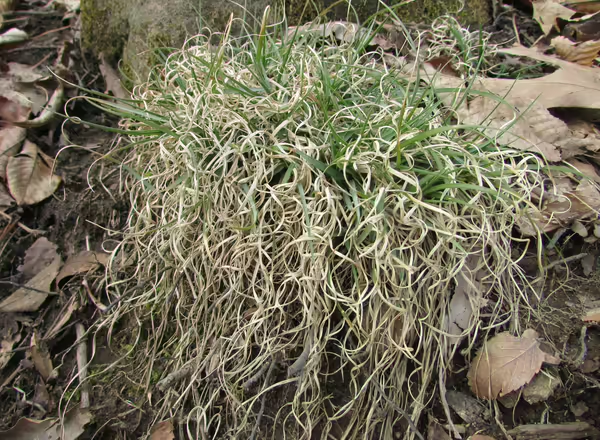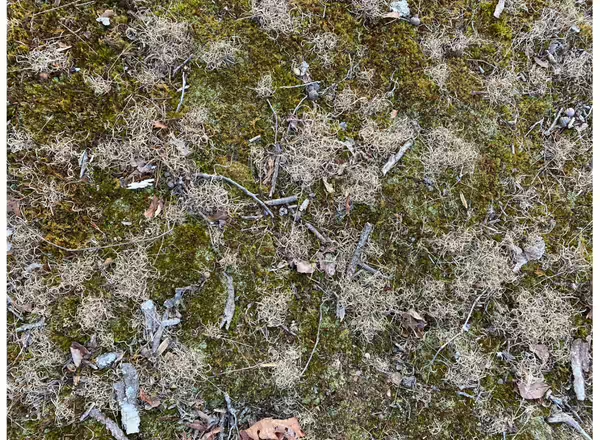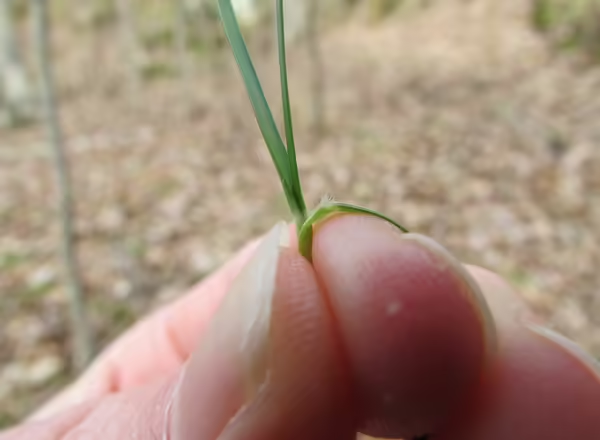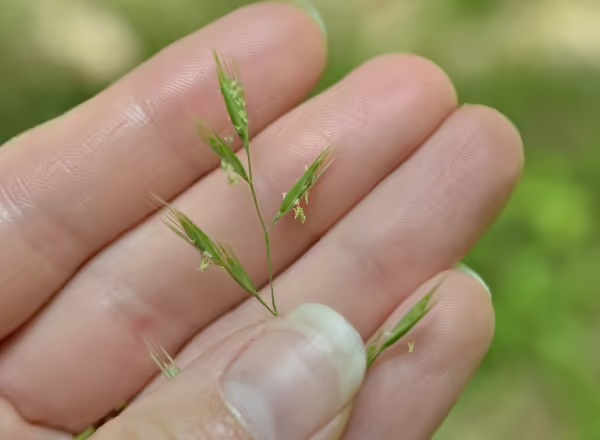Poverty Oat Grass, Danthonia spicata, is a cool-season bunchgrass native to Illinois and found throughout the state. It prefers higher quality bluff or glade habitats but can also be found growing along the edge of lawns. It prefers to grow in sandy or rocky soil.
Identifying characteristics
Poverty Oat Grass grows in bunches, which are often under a foot tall. The easiest identification characteristic is to look for tightly curled corkscrew shaped dead leaves gathered around the base of the bunch - and you can find these leaves year-round. If you take a closer look at the live, green leaves, they can be hairy or smooth, and you can find two tufts of hairs at the top of the leaf sheath.
When it flowers, this grass puts out a stem 1 to 2 feet tall, with a panicle inflorescence. There are only a few awned spikelets per branch and a small number of branches, so it’s easy to miss this grass in bloom.
While not the showiest grass, it can serve as a groundcover in rocky or sandy areas where other vegetation has a hard time growing.
Need a refresher on grass identification terms, like ligule and spikelet? Check out this blog post!




Poverty Oat Grass, Danthonia spicata, is a cool season bunchgrass native to Illinois and found throughout the state in higher quality habitats. Poverty Oat Grass grows in bunches which are often under a foot tall. The thin leaves can be smooth or hairy, and you can find two tufts of...